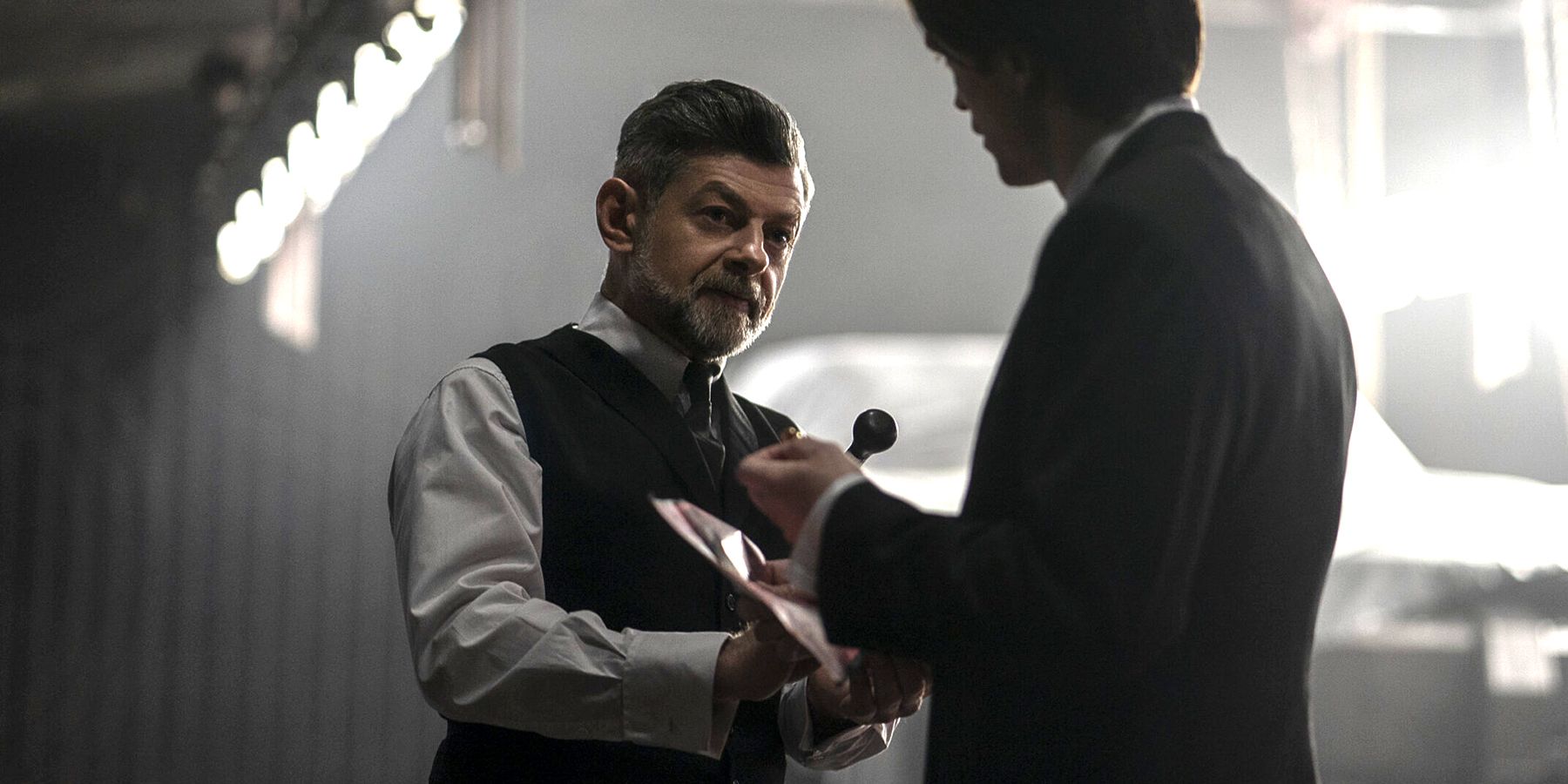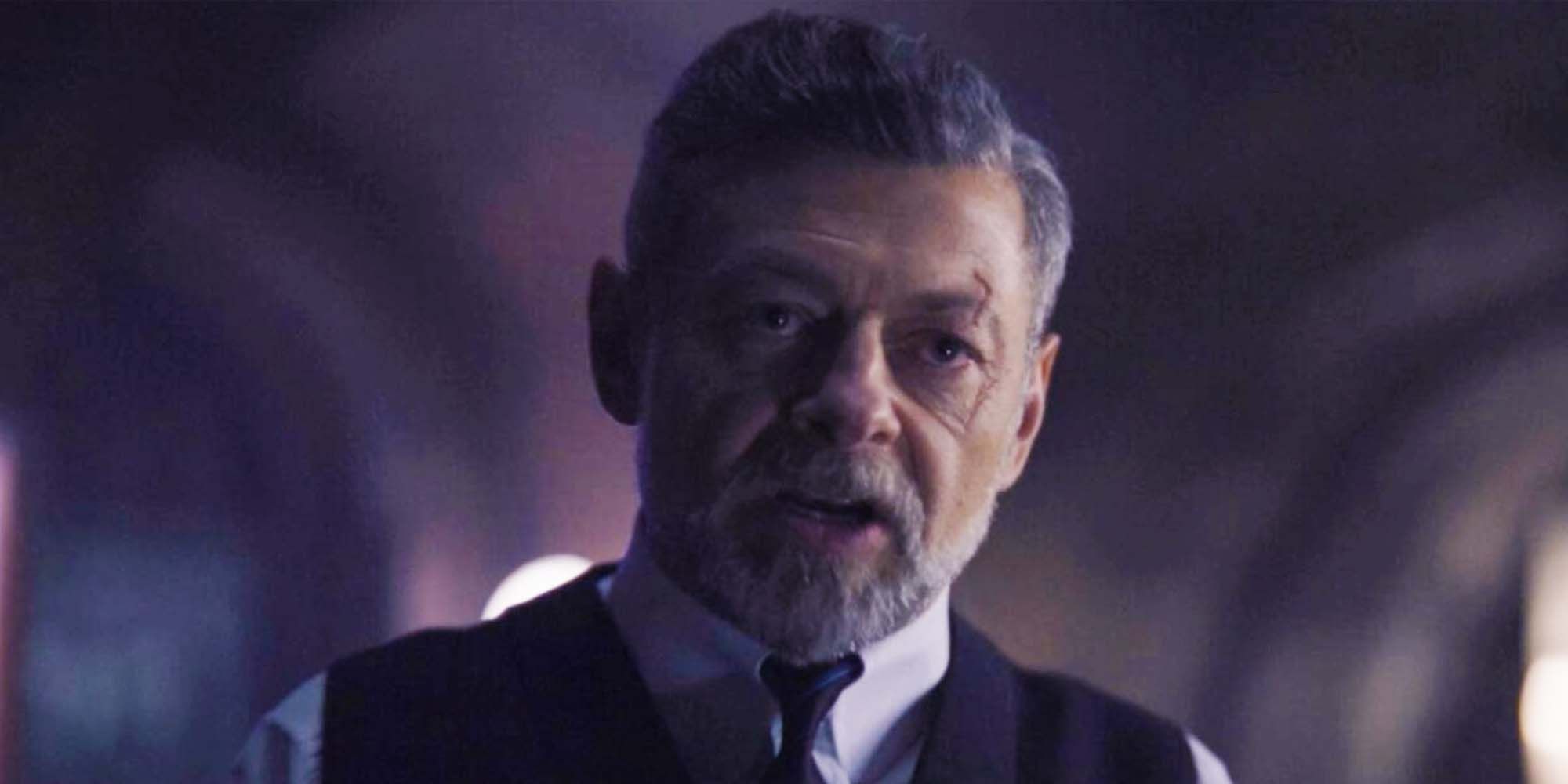Warning: This post contains spoilers for The Batman.
Aflred Pennyworth, Batman's trusted Butler, is played by Andy Serkis in The Batman, and Serkis recently revealed his process of how he approached the character, and how Alfred has some key differences from previous portrayals in this most recent iteration. In previous Batman films, Alfred is notably older and aside from a butler, acts as a father figure to Bruce Wayne since he helped raise Wayne after the death of his parents, Martha and Thomas. Alfred also has references in previous films to having experiences in the British military or MI6 in order to help Wayne out of sticky situations by using his contacts from the military and/or MI6.
Similarly to previous Batman films, Alfred had a past life in the British military and MI6 in The Batman. Another continuous feature of Alfred's character from previous Batman films to The Batman is that Alfred is incredibly well dressed and polished in his style. However, rather than acting more as an overall caretaker to Wayne, Alfred's character in The Batman acted as a past body guard to Wayne's parents.
Now, Serkis revealed in an interview to THR that this difference in Alfred being less fatherly in the past to Wayne has influenced his character in the present to be able to butt heads with Wayne more readily. Another difference that was added by director Matt Reeves is the addition of the cane Alfred walks with to denote a rugged past life. Serkis also suggested the idea to have Alfred's face show scars in order to indicate that besides Batman, Alfred is also a character who has encountered dangerous people. A full quote from Serkis regarding Alfred's backstory and relationship with Wayne can be read below:
"Alfred is very much out of sorts. Being a military man, he is used to rules and regulations, structure and precision. I wanted him to have that military solidity in the way he dressed and carried himself, which is ruffled with Bruce’s nihilism and refusal to listen to him anymore. It’s a relationship built on shifting sands."
Serkis also noted that he had significant input into Alfred's costume design, and that he felt it important that Alfred continued to be dressed sharply to depict his values regardless of Wayne tower falling apart. Although the relationship between Wayne and Alfred is certainly more frayed in The Batman than in past films, there is a tender moment they share after Alfred is nearly killed. Serkis mentioned that there were several takes of that scene in which Alfred was more "vulnerable," but they settled for a more subdued version which is the one seen in the film. The choice to have Alfred maintain some amount of stoicism in the scene where Wayne admits that Alfred is his only friend and confidant may offer more continuity of character and tone.
Although some viewers who are familiar with previous Batman films may be craving a more heartwarming version of Alfred, the choice to add more tension to Wayne and Alfred's relationship creates more room for it to grow in future films, and allows writers to take more unexpected turns in how their dynamic further develops. Alfred also choosing to shield Wayne for years from the truth of his father's flawed past and additions to Gotham's corruption also shows both a sign of caring yet uncertainty. On the one hand, it harkens back to a character trait of Michael Caine's Alfred in The Dark Knight in which Alfred allows Wayne to hold on to the hope that Rachel may have still loved him by burning the letter that she writes to Wayne where she tells him that she will not wait for him. On the other hand, Alfred's deception to Wayne in The Batman could also be a sign that he believes that Wayne was not ready to know the truth of his father's past, and didn't trust how Wayne would react to this information. Alfred's character certainly maintains a level of complexity in The Batman, and it'll be interesting to see how this character continues to develop in future films.
Sources: THR


